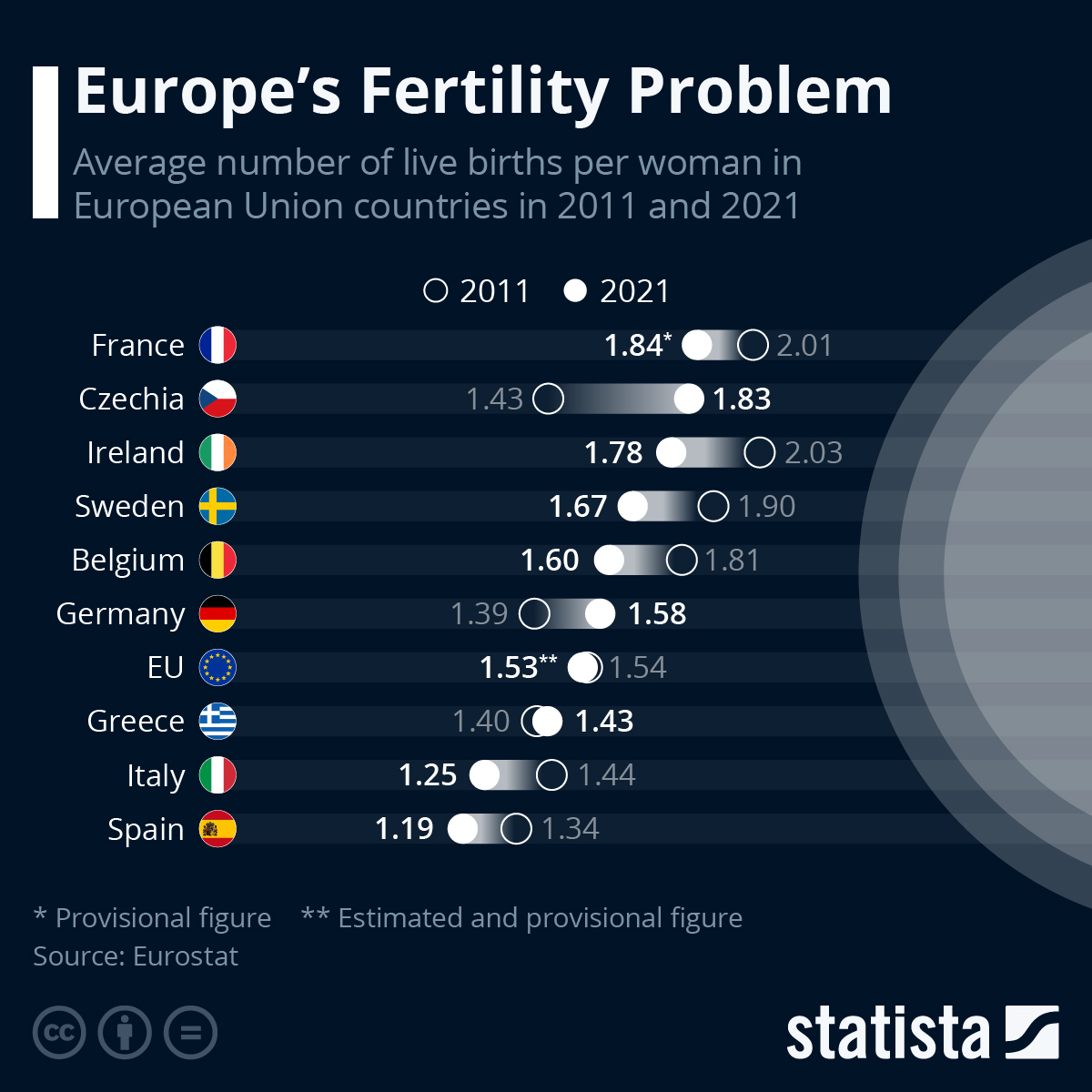
The average number of births per woman in the European Union was 1.53 in 2021, according to the latest available data by Eurostat.
This figure has remained fairly stable over the last ten years (1.54 in 2011), but, as Statista's Anna Fleck notes, is still not high enough for the European population to sustain itself - that is if migration is not taken into account.
This is because the threshold for renewing a generation is estimated to be 2.05 children per woman.
The following chart considers where fertility rates are highest on the continent, and how they have evolved. It looks at the mean number of children that would be born alive to a woman during her lifetime if she were to survive and pass through her childbearing years in different countries.
Trends vary considerably from place to place.
You will find more infographics at Statista
Between 2011 and 2021, a number of countries - including Czechia, Hungary, Romania, Latvia and Germany - saw their fertility rates rise by anywhere between 10 and 30 percent, while others - such as France, Ireland, Belgium, Spain and Italy - saw them fall by around 10 percent.
If this pattern continues, France’s position as the country with the highest fertility rate in the EU (1.84 children per woman in 2021), will soon be overtaken by Czechia (1.83) and Romania (1.81).
Meanwhile, the lowest birth rates recorded in the EU were in Italy (1.25), Spain (1.19) and Malta (1.13).
In an interview with Le Monde, demographer Gilles Pinson explains that the differences between northern and southern European countries can be partly explained by the level of family-friendly employment policies, which are far more limited in southern Europe.
As for Eastern European countries, after seeing their fertility rates fall in the years following the dissolution of the USSR, they have seen an increase once more since the 2000s.
The average number of births per woman in the European Union was 1.53 in 2021, according to the latest available data by Eurostat.
This figure has remained fairly stable over the last ten years (1.54 in 2011), but, as Statista’s Anna Fleck notes, is still not high enough for the European population to sustain itself – that is if migration is not taken into account.
This is because the threshold for renewing a generation is estimated to be 2.05 children per woman.
The following chart considers where fertility rates are highest on the continent, and how they have evolved. It looks at the mean number of children that would be born alive to a woman during her lifetime if she were to survive and pass through her childbearing years in different countries.
Trends vary considerably from place to place.
You will find more infographics at Statista
Between 2011 and 2021, a number of countries – including Czechia, Hungary, Romania, Latvia and Germany – saw their fertility rates rise by anywhere between 10 and 30 percent, while others – such as France, Ireland, Belgium, Spain and Italy – saw them fall by around 10 percent.
If this pattern continues, France’s position as the country with the highest fertility rate in the EU (1.84 children per woman in 2021), will soon be overtaken by Czechia (1.83) and Romania (1.81).
Meanwhile, the lowest birth rates recorded in the EU were in Italy (1.25), Spain (1.19) and Malta (1.13).
In an interview with Le Monde, demographer Gilles Pinson explains that the differences between northern and southern European countries can be partly explained by the level of family-friendly employment policies, which are far more limited in southern Europe.
As for Eastern European countries, after seeing their fertility rates fall in the years following the dissolution of the USSR, they have seen an increase once more since the 2000s.
Loading…





